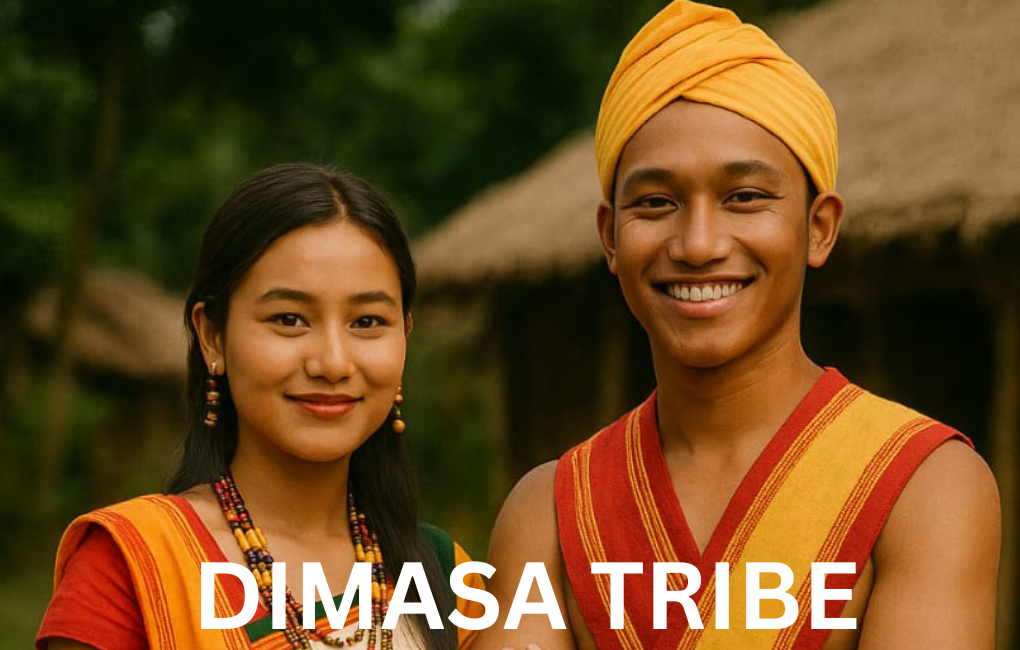The Dimasa Tribe of Assam, more widely known as the Dimasa Kacharis, form one of the most culturally rich and historically significant indigenous communities of Northeast India. Primarily inhabiting the North Cachar Hills (present-day Dima Hasao), they also reside in scattered pockets of Karbi Anglong and Cachar districts. In the Cachar region, they are commonly referred to as ‘Barmans’. Over centuries, the Demasha people have preserved a distinct identity rooted in unique linguistic, cultural, and spiritual traditions.
Racial and Linguistic Identity
The Dimasa Kacharis belong to the Bodo group of the greater Tibeto-Burman linguistic family, sharing ancestral ties with other Assamese tribes such as the Bodos, Meches, Rabhas, Lalungs, and Koches. Historically, these groups are believed to have migrated from western China, settling along major river valleys like the Brahmaputra.
The name Dimasa literally translates to “Son of the Big River,” with ‘Di’ meaning water, ‘Ma’ signifying great, and ‘Sa’ meaning son. The deep association with rivers like the Brahmaputra is reflected in many regional river names beginning with ‘Di’.
Origin and Settlement of The Dimasa Tribe of Assam
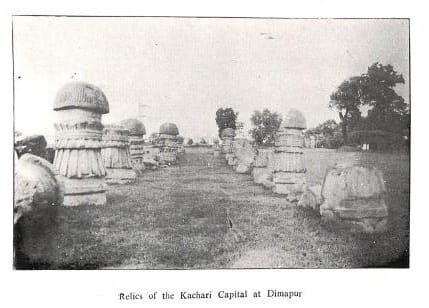
Legends trace the Dimasa Kingdom back to Pragjyotishpur (modern-day Guwahati) and later to Dimapur in Nagaland. Their rule extended across central Assam and even into parts of present-day Bangladesh. After repeated conflicts with the Ahoms, particularly in the 13th and 18th centuries, the capital was shifted from Dimapur to Maibong and eventually to Khaspur in the Cachar plains.
The last ruling king, Gobind Chandra, died without an heir, leading to the British annexation of the Dimasa kingdom in 1830. Despite political disintegration, the community preserved its socio-cultural traditions remarkably well.
Demographic Profile of The Dimasa Tribe of Assam
According to the 1971 Census, the Dimasa Kachari population stood at 39,344, with an estimated rise to over 53,000 by 1981. Literacy levels remained low, especially among women, highlighting the need for educational development. However, today, Dimasa leaders and reformers are taking strong initiatives to improve this scenario.
Social Structure and Clan System
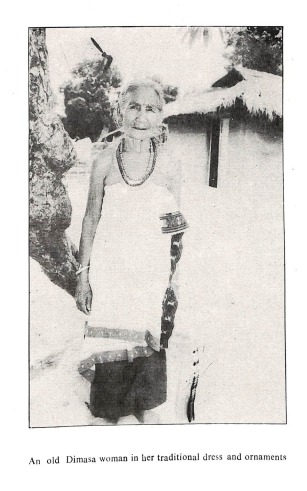
Dimasa society is patriarchal yet uniquely recognizes both male and female clan systems — a rare dual-clan tradition in tribal India. There are 40 male (Sengphong) and 42 female (Zaluk) clans, with strict exogamous marriage rules. A son belongs to his father’s clan, while a daughter follows the maternal line.
Marriage by negotiation is customary, with bride price (Kalti) still practiced in rural areas. Monogamy is the norm, and widow remarriage is permitted. Traditional inheritance laws prevent daughters from inheriting paternal property and vice versa for sons and maternal wealth.
Village Life and Administration
Dimasa villages, known as Nablai, are typically situated on riverbanks and slopes. Homes are built with bamboo, mud plaster, and thatched roofs. The Kunang, a traditional village headman, remains an influential figure alongside the government-appointed Gaonbura. Justice is administered locally through village elders.
An important institution once vital to social training was the Nodrang—a bachelor’s dormitory for boys to learn crafts, music, and village protection. Though fading now, it remains a proud cultural memory.
Religion and Spirituality of The Dimasa Tribe of Assam
Religion among the Dimasa tribe blends indigenous animism with Hindu beliefs. Their six principal ancestral deities, or ‘Madai’, include Sibrai (linked to Lord Shiva). Each village has a clan deity, worshipped annually. Religious leadership is drawn from the Hojaisa clan, and ceremonial roles are performed by priests called Zonthai, under the head priest Gisia.
Despite attempts by Christian missionaries, the Dimasas have retained their traditional spiritual identity, with rituals involving the sacrifice of pigs, fowls, and occasionally buffaloes.
Economic Life of The Dimasa Tribe of Assam
Agriculture
Agriculture is the mainstay of the Dimasa economy. In the hills, they practice shifting cultivation (Jhum), while those in the plains follow wetland cultivation. Crops include paddy, maize, sesame, ginger, cotton, and vegetables. Modern techniques like HYV seeds, chemical fertilizers, and terracing are now adopted.
Livestock and Industries
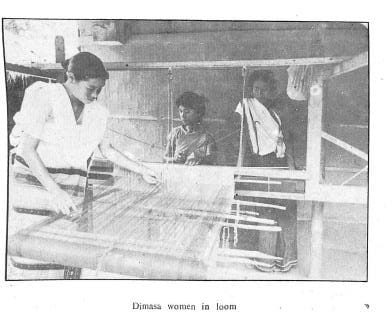
Livestock rearing, especially buffaloes, is common, though milk is not consumed due to cultural beliefs. Weaving, especially of Endi silk, is a major cottage industry. Dimasa women are renowned for their intricate designs, with weaving skills considered essential for marriage eligibility.
Bamboo and cane crafts are also widespread, producing goods both for domestic use and sale. The Hangsao, a youth-based cooperative work system, supports agricultural labor and community bonding.
Cultural Heritage of The Dimasa tribe of Assam
Music and Dance
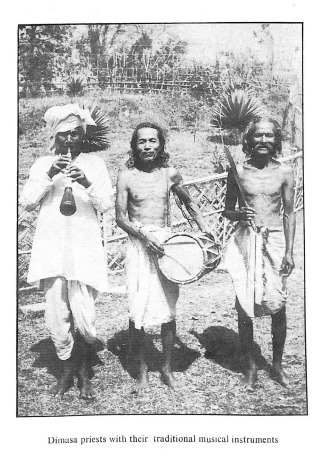
The Dimasas are lovers of folk music and dance. Instruments such as Khram (drum) and Muri (flute) are central to performances. Dances are performed during community events and in honor of guests, rich with expressions of Lashya (grace and beauty).
Festivals
Important festivals include:
- Rajini Gabra and Harni Gabra: Held before sowing season.
- Busu: The harvest festival, the most joyous celebration, featuring dances, feasts, and traditional rice beer (Zou).
Dress and Ornaments
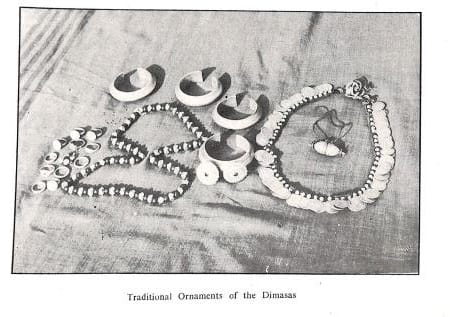
Traditional Dimasa attire is both elegant and symbolic. Men wear Risa, Rinsao, and Endi turbans, while women wear the Rigu (skirt) and Rijamphai (scarf). Jewelry includes necklaces, bracelets, ear and nose rings—often made of silver and beads.
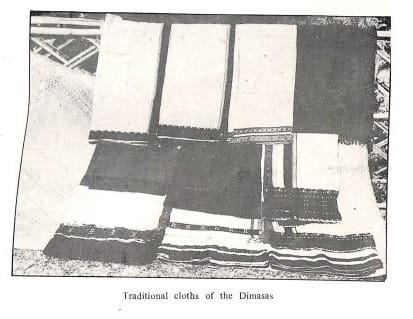
Food and Drink
Staple food includes rice, vegetables, meat (including wild game), and dried fish. Zou, a home-brewed rice beer, is central to social and religious functions. Interestingly, they do not consume milk, as they believe it is reserved for calves and offspring.
Legacy and Modern Transformation
Despite centuries of isolation and adversity, THE DEMASHA TRIBE of Assam has safeguarded its culture, language, and traditions. Yet, modern influences are steadily shaping their lives. With better education, improved agricultural practices, and active political participation through the Dima Hasao Autonomous District Council, the Dimasas are embracing change.
Their leaders like Joybhadra Hagjer and Surath Chandra Daulagopu have played vital roles in bringing national attention to Dimasa issues. The current generation, too, is contributing to the socio-economic and political progress of their people.
Conclusion: Preserving the Legacy of The Dimasa Tribe of Assam
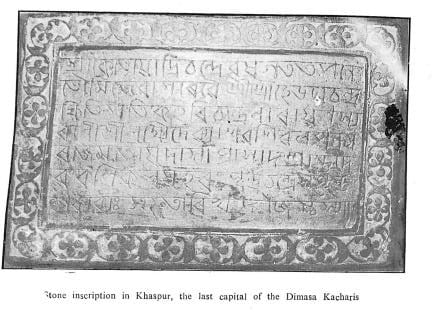
THE DEMASHA TRIBE of Assam—proud descendants of a once powerful kingdom—continues to thrive in their cultural roots while navigating modernity. Their story is not just about a tribe but about resilience, adaptation, and a deep love for tradition. With continued support and recognition, the Dimasa Kacharis will remain a vibrant and integral part of Assam’s multicultural identity.


